Anouar Ben Khalifa
Jedi: Entropy-based Localization and Removal of Adversarial Patches
Apr 20, 2023Abstract:Real-world adversarial physical patches were shown to be successful in compromising state-of-the-art models in a variety of computer vision applications. Existing defenses that are based on either input gradient or features analysis have been compromised by recent GAN-based attacks that generate naturalistic patches. In this paper, we propose Jedi, a new defense against adversarial patches that is resilient to realistic patch attacks. Jedi tackles the patch localization problem from an information theory perspective; leverages two new ideas: (1) it improves the identification of potential patch regions using entropy analysis: we show that the entropy of adversarial patches is high, even in naturalistic patches; and (2) it improves the localization of adversarial patches, using an autoencoder that is able to complete patch regions from high entropy kernels. Jedi achieves high-precision adversarial patch localization, which we show is critical to successfully repair the images. Since Jedi relies on an input entropy analysis, it is model-agnostic, and can be applied on pre-trained off-the-shelf models without changes to the training or inference of the protected models. Jedi detects on average 90% of adversarial patches across different benchmarks and recovers up to 94% of successful patch attacks (Compared to 75% and 65% for LGS and Jujutsu, respectively).
Adversarial Attacks in a Multi-view Setting: An Empirical Study of the Adversarial Patches Inter-view Transferability
Oct 10, 2021
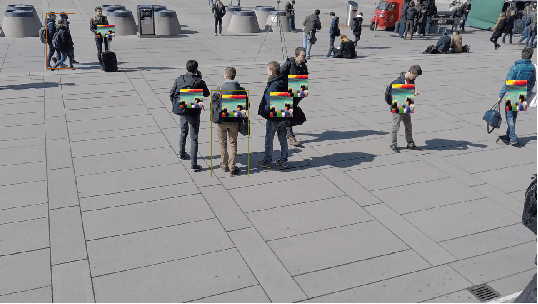
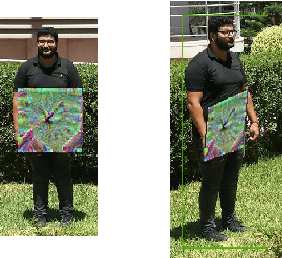

Abstract:While machine learning applications are getting mainstream owing to a demonstrated efficiency in solving complex problems, they suffer from inherent vulnerability to adversarial attacks. Adversarial attacks consist of additive noise to an input which can fool a detector. Recently, successful real-world printable adversarial patches were proven efficient against state-of-the-art neural networks. In the transition from digital noise based attacks to real-world physical attacks, the myriad of factors affecting object detection will also affect adversarial patches. Among these factors, view angle is one of the most influential, yet under-explored. In this paper, we study the effect of view angle on the effectiveness of an adversarial patch. To this aim, we propose the first approach that considers a multi-view context by combining existing adversarial patches with a perspective geometric transformation in order to simulate the effect of view angle changes. Our approach has been evaluated on two datasets: the first dataset which contains most real world constraints of a multi-view context, and the second dataset which empirically isolates the effect of view angle. The experiments show that view angle significantly affects the performance of adversarial patches, where in some cases the patch loses most of its effectiveness. We believe that these results motivate taking into account the effect of view angles in future adversarial attacks, and open up new opportunities for adversarial defenses.
Multimodal Biometric Authentication Using Choquet Integral and Genetic Algorithm
Mar 27, 2018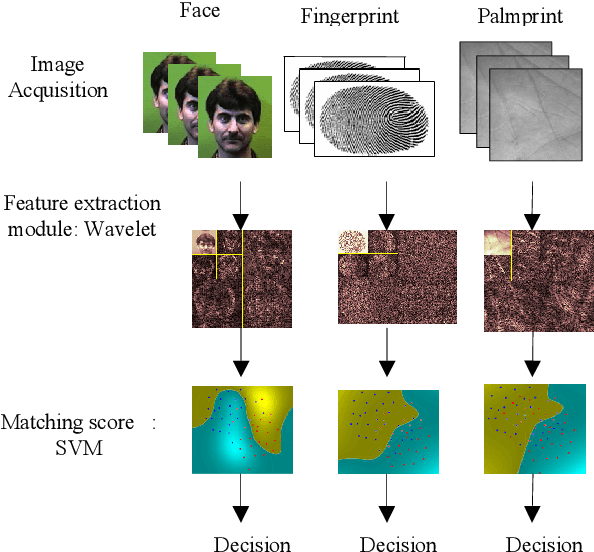

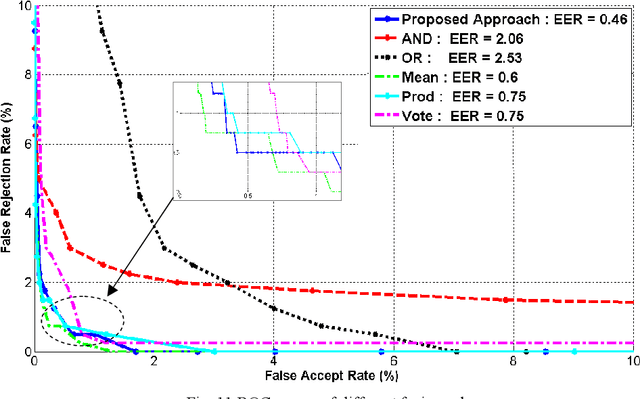
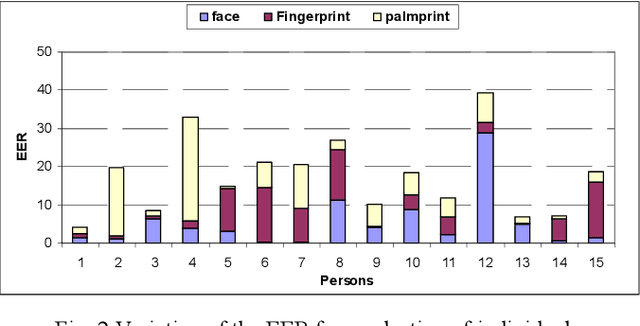
Abstract:The Choquet integral is a tool for the information fusion that is very effective in the case where fuzzy measures associated with it are well chosen. In this paper,we propose a new approach for calculating fuzzy measures associated with the Choquet integral in a context of data fusion in multimodal biometrics. The proposed approach is based on genetic algorithms. It has been validated in two databases: the first base is relative to synthetic scores and the second one is biometrically relating to the face, fingerprintand palmprint. The results achieved attest the robustness of the proposed approach.
 Add to Chrome
Add to Chrome Add to Firefox
Add to Firefox Add to Edge
Add to Edge